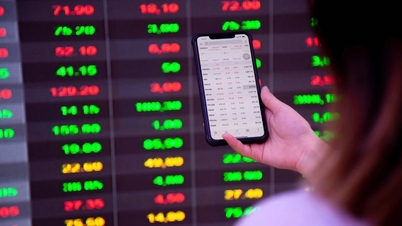The origin of the letter "K" comes from the word "kilo" in the International System of Units (SI). "Kilo" comes from the Greek word (khilioi), meaning "one thousand".
In the SI system of measurement, prefixes such as kilo-, mega-, giga- are used to denote multiples of 10. For example, a kilometer (km) is one thousand meters, a kilogram (kg) is one thousand grams, and a kiloliter (kl) is one thousand liters. The use of the letter "K" to denote the number 1 thousand in contexts other than the metric system also originates from this.
The letter "K" is widely used in many different fields. In finance and business, "K" is often used to denote amounts or quantities in thousands. For example, 5K means 5 thousand units of currency. In technology and computer science , "K" is also used to denote large quantities, for example, a 10KB (kilobyte) file has a capacity of 10 thousand bytes. On social media platforms, the letter "K" is often used to denote the number of followers, likes or views, for example, 20K followers means 20 thousand followers.

Illustration: yeah1.com
Using the letter "K" has many advantages. It is convenient and concise, saving space and time when writing or reading large numbers. Instead of writing "1,000" or "one thousand", you can just write "1K", which is easier and faster.
The letter "K" is also an international symbol, recognized and widely used around the world , which helps avoid confusion when communicating in international contexts or with foreigners.
Finally, in many cases, using the letter "K" helps to represent exact quantities without the need for a comma or period to separate the thousands.
The letter "K" is not only used in finance and technology but also in other fields. In sports , such as running, the letter "K" is used to denote distance, for example a 5K race means a race of 5 thousand meters...
Source: https://vtcnews.vn/tai-sao-goi-1-nghin-la-1k-ar911795.html





![[Photo] President Luong Cuong receives President of the Senate of the Czech Republic Milos Vystrcil](/_next/image?url=https%3A%2F%2Fvphoto.vietnam.vn%2Fthumb%2F1200x675%2Fvietnam%2Fresource%2FIMAGE%2F2025%2F11%2F20%2F1763629737266_ndo_br_1-jpg.webp&w=3840&q=75)
![[Photo] National Assembly Chairman Tran Thanh Man holds talks with South Korean National Assembly Chairman Woo Won Shik](/_next/image?url=https%3A%2F%2Fvphoto.vietnam.vn%2Fthumb%2F1200x675%2Fvietnam%2Fresource%2FIMAGE%2F2025%2F11%2F20%2F1763629724919_hq-5175-jpg.webp&w=3840&q=75)
![[Photo] Lam Dong: Panoramic view of Lien Khuong waterfall rolling like never before](/_next/image?url=https%3A%2F%2Fvphoto.vietnam.vn%2Fthumb%2F1200x675%2Fvietnam%2Fresource%2FIMAGE%2F2025%2F11%2F20%2F1763633331783_lk7-jpg.webp&w=3840&q=75)












































































































Comment (0)